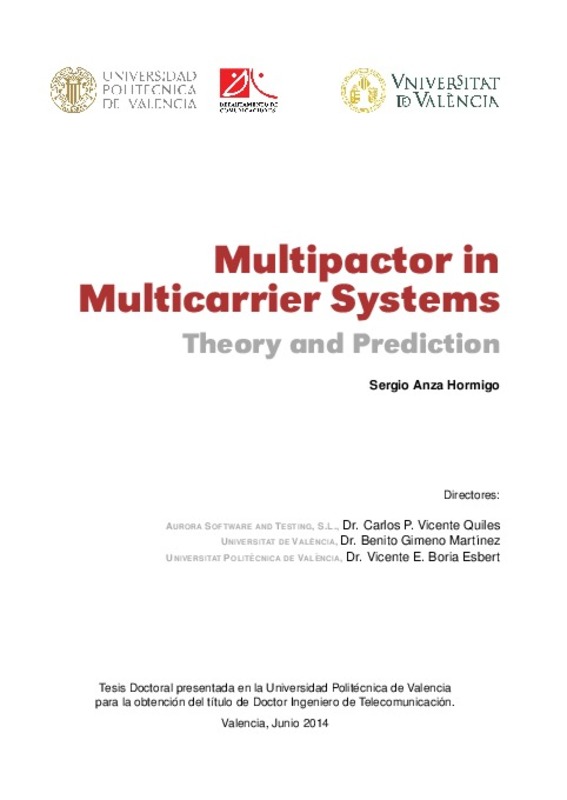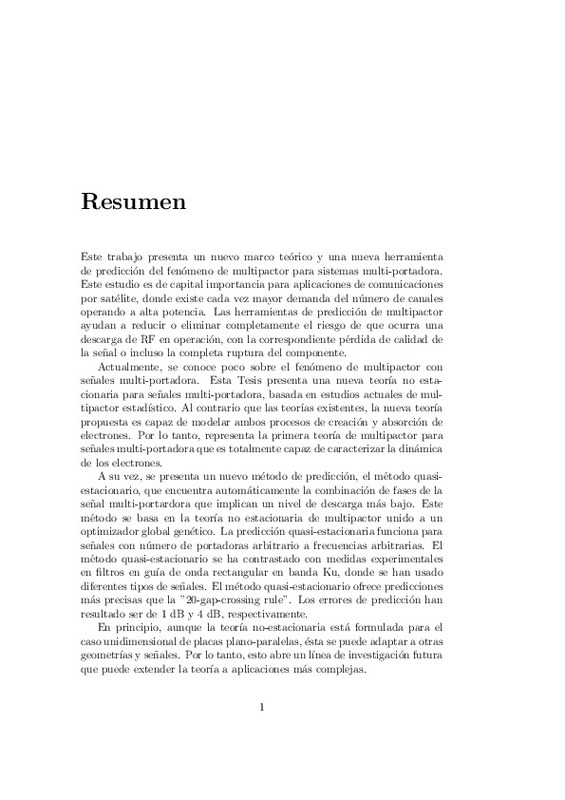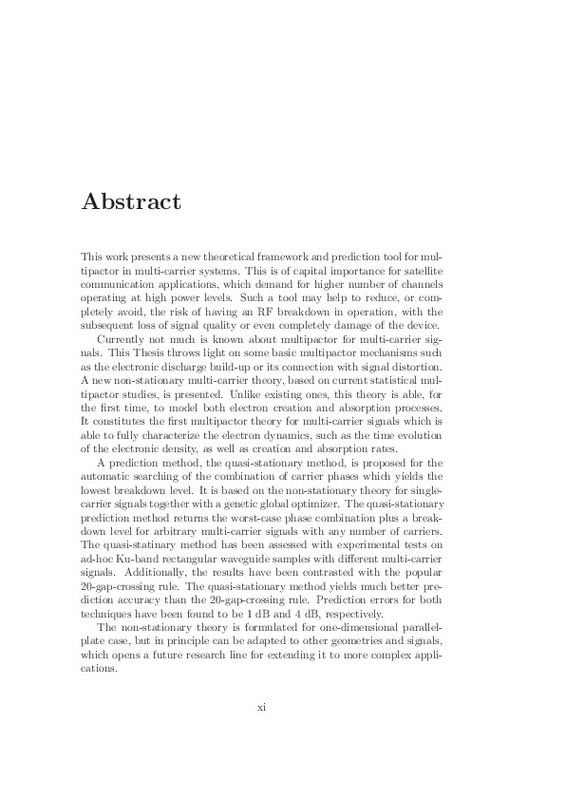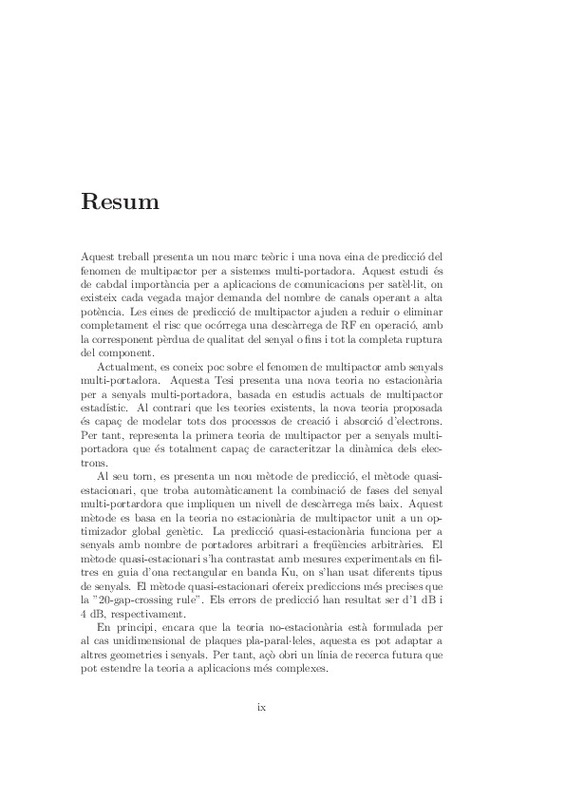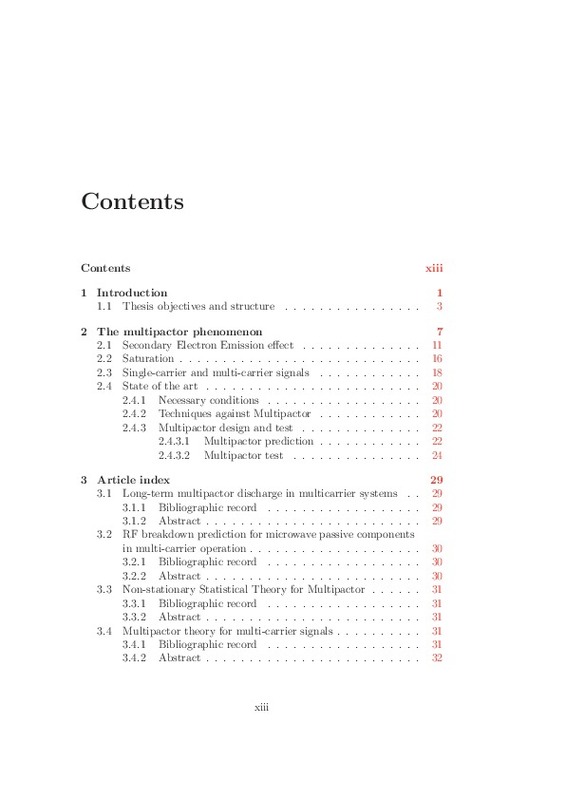- RiuNet repositorio UPV
- :
- Investigación
- :
- Tesis doctorales
- :
- Ver ítem
JavaScript is disabled for your browser. Some features of this site may not work without it.
Buscar en RiuNet
Listar
Mi cuenta
Estadísticas
Ayuda RiuNet
Admin. UPV
Multipactor in Multicarrier Systems. Theory and Prediction
Mostrar el registro completo del ítem
Anza Hormigo, S. (2014). Multipactor in Multicarrier Systems. Theory and Prediction [Tesis doctoral]. Universitat Politècnica de València. https://doi.org/10.4995/Thesis/10251/38761
Por favor, use este identificador para citar o enlazar este ítem: http://hdl.handle.net/10251/38761
Ficheros en el ítem
Metadatos del ítem
| Título: | Multipactor in Multicarrier Systems. Theory and Prediction | |||
| Autor: | Anza Hormigo, Sergio | |||
| Director(es): | Gimeno Martinez, Benito Vicente Quiles, Carlos Pascual | |||
| Entidad UPV: |
|
|||
| Fecha acto/lectura: |
|
|||
| Resumen: |
This work presents a new theoretical framework and prediction tool for multipactor
in multi-carrier systems. This is of capital importance for satellite
communication applications, which demand for higher number of ...[+]
|
|||
| Palabras clave: |
|
|||
| Derechos de uso: | Reserva de todos los derechos | |||
| DOI: |
|
|||
| Editorial: |
|
|||
| Tipo: |
|
recommendations
Este ítem aparece en la(s) siguiente(s) colección(ones)
-
Tesis doctorales [5422]






